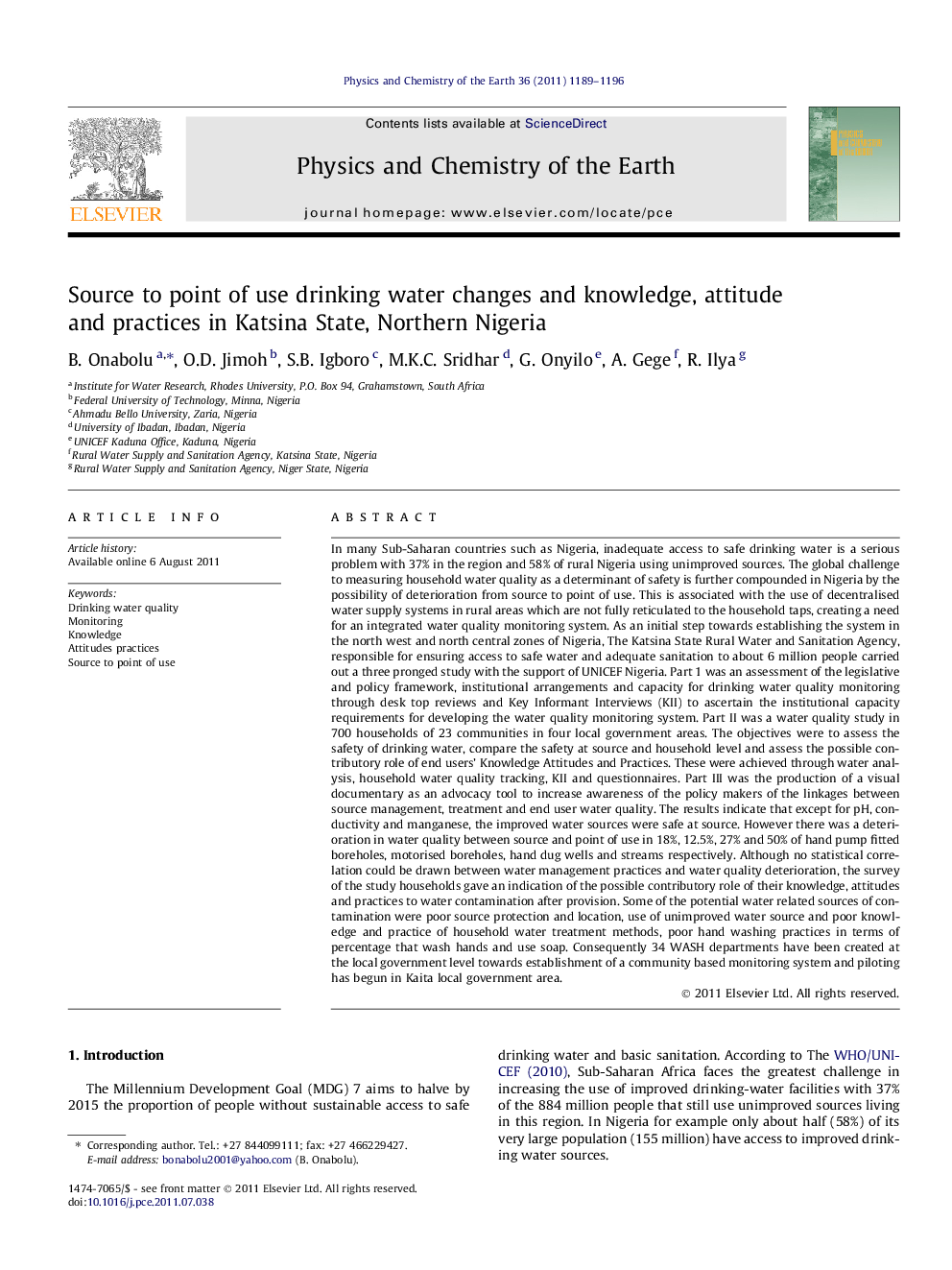| کد مقاله | کد نشریه | سال انتشار | مقاله انگلیسی | نسخه تمام متن |
|---|---|---|---|---|
| 4721340 | 1639374 | 2011 | 8 صفحه PDF | دانلود رایگان |

In many Sub-Saharan countries such as Nigeria, inadequate access to safe drinking water is a serious problem with 37% in the region and 58% of rural Nigeria using unimproved sources. The global challenge to measuring household water quality as a determinant of safety is further compounded in Nigeria by the possibility of deterioration from source to point of use. This is associated with the use of decentralised water supply systems in rural areas which are not fully reticulated to the household taps, creating a need for an integrated water quality monitoring system. As an initial step towards establishing the system in the north west and north central zones of Nigeria, The Katsina State Rural Water and Sanitation Agency, responsible for ensuring access to safe water and adequate sanitation to about 6 million people carried out a three pronged study with the support of UNICEF Nigeria. Part 1 was an assessment of the legislative and policy framework, institutional arrangements and capacity for drinking water quality monitoring through desk top reviews and Key Informant Interviews (KII) to ascertain the institutional capacity requirements for developing the water quality monitoring system. Part II was a water quality study in 700 households of 23 communities in four local government areas. The objectives were to assess the safety of drinking water, compare the safety at source and household level and assess the possible contributory role of end users’ Knowledge Attitudes and Practices. These were achieved through water analysis, household water quality tracking, KII and questionnaires. Part III was the production of a visual documentary as an advocacy tool to increase awareness of the policy makers of the linkages between source management, treatment and end user water quality. The results indicate that except for pH, conductivity and manganese, the improved water sources were safe at source. However there was a deterioration in water quality between source and point of use in 18%, 12.5%, 27% and 50% of hand pump fitted boreholes, motorised boreholes, hand dug wells and streams respectively. Although no statistical correlation could be drawn between water management practices and water quality deterioration, the survey of the study households gave an indication of the possible contributory role of their knowledge, attitudes and practices to water contamination after provision. Some of the potential water related sources of contamination were poor source protection and location, use of unimproved water source and poor knowledge and practice of household water treatment methods, poor hand washing practices in terms of percentage that wash hands and use soap. Consequently 34 WASH departments have been created at the local government level towards establishment of a community based monitoring system and piloting has begun in Kaita local government area.
► High pH, conductivity and manganese levels in source waters.
► Deterioration in microbial quality more prevalent in unimproved than in improved sources.
► No significant correlation between water quality and water handling practices.
► Indications of potential contributory WASH KAP obtained from survey.
► Visual documentary a powerful evidence based tool for policy makers.
Journal: Physics and Chemistry of the Earth, Parts A/B/C - Volume 36, Issues 14–15, 2011, Pages 1189–1196